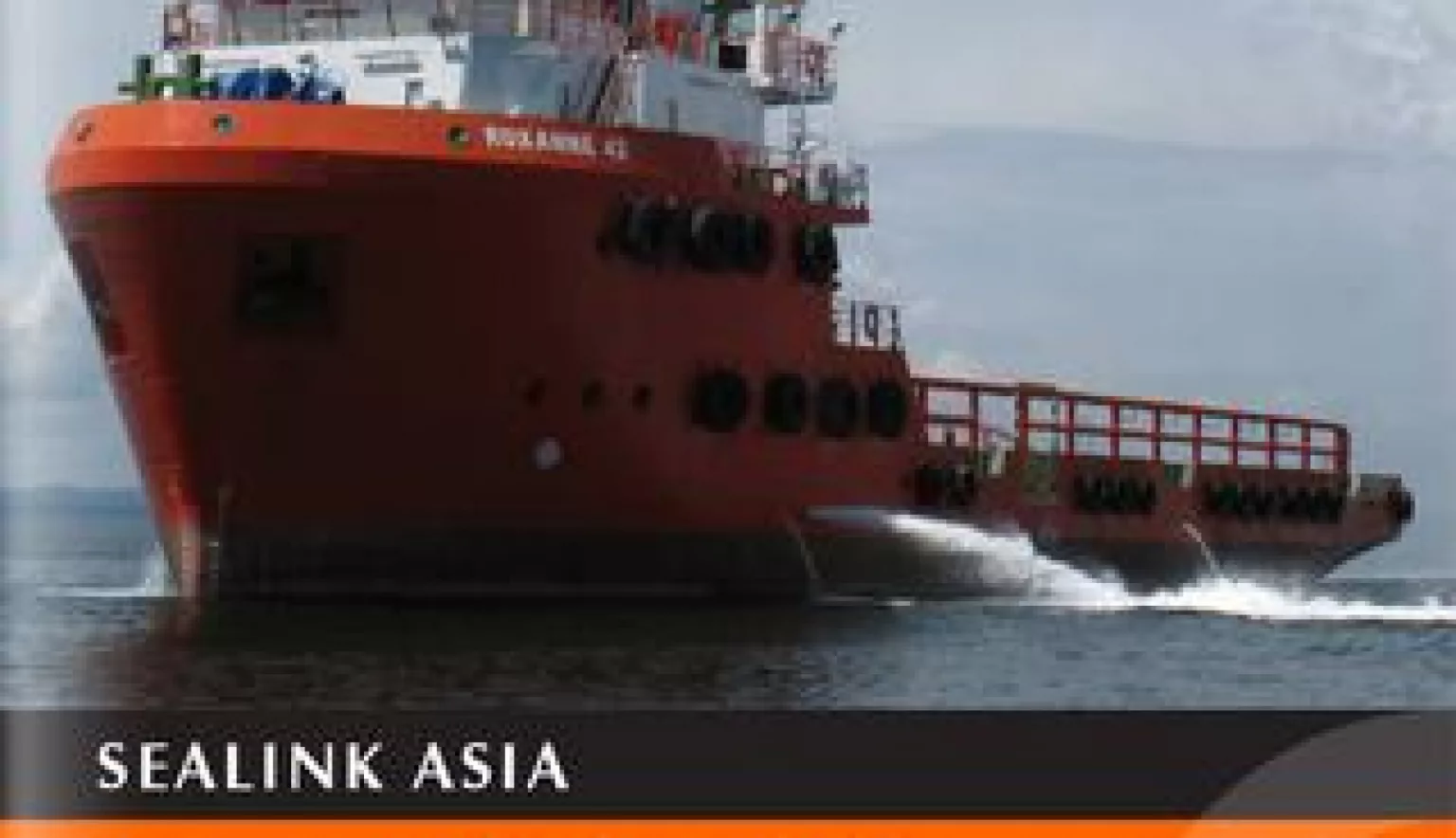Sealink Asia is looking to leverage its reputation as the very first integrated service provider for oil & gas in Asia to enhance its international notoriety even further.
THE GLOBAL INTEGRATED SERVICE PROVIDER
Currently serving clients across 20 countries in Asia, the Middle East, North Africa and Europe, Sealink Asia has evolved over the years from being a ship owner and operator in its early days to capitalise on the developing markets in becoming a ship builder in the late 1990s.
This diversification laid the foundations for what has proved to be a sustained period of growth for Sealink over the subsequent two decades; the Group also adding a shipping maintenance and repairs subsidiary to its portfolio of services.
The result has been a turnkey, flexible and customisable range of services offered to players within the oil & gas markets around the world; giving itself as much chance as possible to attain key projects in what can be a fiercely competitive sector.
“It has been a natural progression over the years, progressing from the early days into handling tugs and landing crafts, moving along with the industry,” says Ting Hui, Corporate Communications. “Nowadays, there is more demand for bigger, more modern vessels, hybrid vessels, or greener vessels, and we adapt our services to that.”
INTEGRATED SERVICE PROVIDER
Under Sealink’s chartering division, areas of anchor handling, transportation of supplies, diving support, towing, mooring maintenance and seismic support are all catered for. From a manufacturing perspective, the aforementioned tugs and landing crafts are complemented by an array of seismic support vessels, barges, chemical tankers and oil carriers.
Its more recent maintenance component completes the portfolio being offered by Sealink, creating a diversity that is essential in forming meaningful business partnerships.
“We have worked with industry leaders like Shell in specific countries over the years, but it doesn’t necessarily mean we will obtain business with the same company in a different country,” Hui says. “Therefore, to obtain the first order with a new client or in a new country, it is still difficult and that is where our reputation is most important.
“The ability to get that first project is the most important aspect. Because we are vessel owners we don’t bid for the contracts in the prospective overseas countries. We have to work with an agent or the owners there and they will then use our vessel to enter into the tender contract and bid for it.”
To put such faith in Sealink’s offering as part of such a process requires a similar trust among clients that the Company adheres to the very latest industry trends.
Currently, these involve issues surrounding efficiency and environmental considerations, as well as optimisation of newer technologies in order to aid the migration from tier 2 to tier 3 engines and ship components; all of which are addressed through close collaboration with said clients.
“This is why, for us, we find that the integrated service provider model works best,” Hui notes. “A normal vessel builder bases plans for the yard on maximum profits and to do that you have to make as many repeat vessels as you can.
“The problem with that though is you may be building a lot of repeat vessels and the price might come down, but when the market trends and requirements change, whatever you originally built at a lower cost may no longer be what is expected in the market.
“From our interaction with customers, we see what types of vessels will be required in the different regions of the world, in terms of quality and functionality, and can prepare our yard for that.”
MAINTAINING EFFICIENCIES
To facilitate such entrepreneurial and efficient operations, equally well-strung internal procedures have also been honed over the years , bringing into play carefully planned capital investments – again in line with the most pressing industry trends – as well as refining its employment and supply chain management strategies.
“From a capital expenditure perspective, inventory is a big trend with nobody in the industry wanting to stock up while there is a slowdown in shipping activities,” Hui explains. “This means we are just buying what is required to maintain our own efficiencies as well as the efficiencies of our clients.”
Similarly, from a supply chain management perspective, Sealink Asia takes an efficient, centralised approach, utilising the base of its yard in Malaysia, while also remaining flexible in its international operations to maintain its builds more locally in each operating region.
Once again, the development of these internal processes not only allows the Company to cater for current and historical demands entrenched within the industry, but also allows the business to be flexible enough to react to fluctuations and changes in the market moving forward.
Skills development is another facet falling under this philosophy, having overcome market competitiveness in recent years to retain the required skills, quality and experience within the workforce. Now, with the market more settled, the area of staff retention has solidified even further.
“Reputation does help in retaining people, but right now, we don’t see a problem in this area because the challenge of new players in the market is very low,” Hui states. “This doesn’t mean that we don’t keep an open communication with employees though, as we always try to know what challenges they have and what actions we can take to improve that interaction.”
EXPLORING OPPORTUNITIES
Internal satisfaction naturally transfers to client satisfaction ultimately, once again harking back to the differentiator that Hui believes continues to form the crux of the success of Sealink Asia; its value proposition.
“Right now, the angle we look at and the way we find value for our clients is through our flexibility and ability to make modifications and refinements, because we are in control of our yard,” he says. “When a customer is looking for a specific type of vessel, we have the capabilities to be very flexible within our yard to install the required equipment on board.”
Looking forward, this model certainly won’t modify to the extent that its operations can, but this isn’t to say that Sealink Asia is looking to just consolidate and be content with its current successes.
Hui concludes: “The market is challenging right now, with a surplus of vessels in the region, all with oil & gas capabilities. Everyone is therefore trying to ensure they have adequate utilisation of their vessels.
“Because of this, we are looking at and exploring the opportunity to venture further from our base in Malaysia, collaborating with some of the industry players to expand our offering into neighbouring countries.”




































